It will be our pleasure to welcome all of you in our winery! we are a small winery so the tasting will be done in our house and everything will be just familiar…hope this will not be a problem for you!”
Absolutely not. This is precisely what I am looking for in our winery visits during our Italiaoutdoors Food and Wine tours – the chance for our guests to meet face to face with a family producer, and see first hand the passion and knowledge that they pour into every bottle.
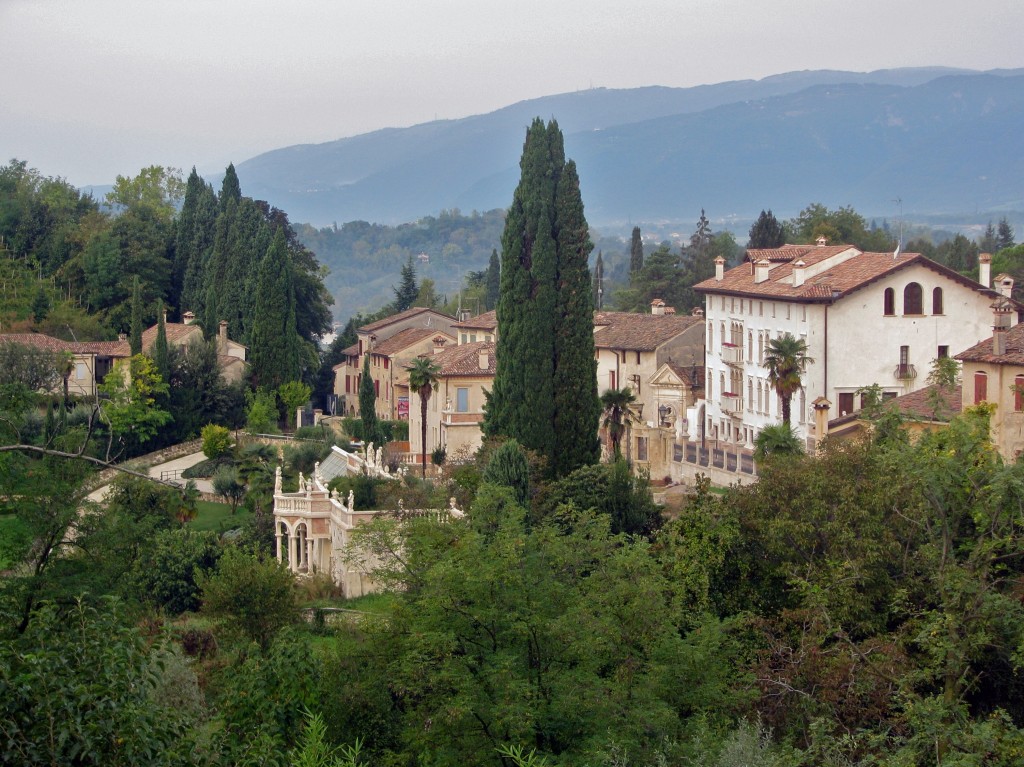 Our day began with our bike ride from Bassano del Grappa, known for it’s famous digestif, grappa to our next destination, Castelfranco Veneto. We stopped first for a bite to eat in one of the loveliest little towns in Italy, Asolo. Known as “The City of a Hundred Horizons”, it’s hilltop location provides panoramic views in all directions. It is also the home to some wonderful sparkling prosecco wines, produced under the Asolo Prosecco DOCG quality denomination. The Asolo foothills are located northwest of Treviso, just due west of the better known Conegliano Valdobbiadene Prosecco region. Prosecco wines from these Asolo hills can also earn the DOCG status if they meet the strict quality guidelines. We pass through many of these vineyards on our way south to meet our winery hosts as Bele Casel, a producer of Asolo Prosecco DOCG wines.
Our day began with our bike ride from Bassano del Grappa, known for it’s famous digestif, grappa to our next destination, Castelfranco Veneto. We stopped first for a bite to eat in one of the loveliest little towns in Italy, Asolo. Known as “The City of a Hundred Horizons”, it’s hilltop location provides panoramic views in all directions. It is also the home to some wonderful sparkling prosecco wines, produced under the Asolo Prosecco DOCG quality denomination. The Asolo foothills are located northwest of Treviso, just due west of the better known Conegliano Valdobbiadene Prosecco region. Prosecco wines from these Asolo hills can also earn the DOCG status if they meet the strict quality guidelines. We pass through many of these vineyards on our way south to meet our winery hosts as Bele Casel, a producer of Asolo Prosecco DOCG wines.
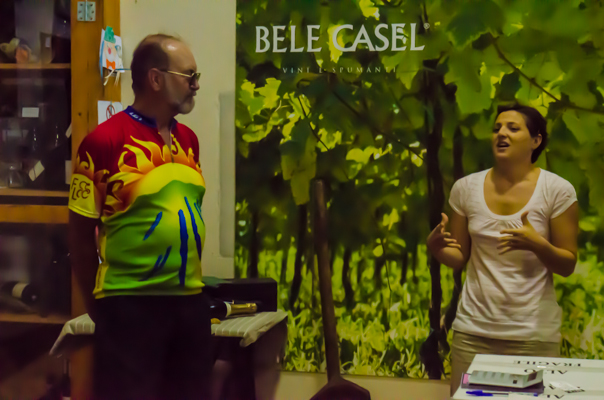 Luca, the winemaker, greets me as I arrive by car slightly ahead of our guests on their bikes. Luca’s wife, Giuliana, will be showing us around as she speaks better English, and we are fortunate also to have Luca’s father accompany us. Luca’s grandfather started with just a hectare of vines. Luca’s father studied wine making in school, and he and his wife devoted themselves to producing their own wines, spending many late hours in the fields and cellars after working their day jobs. Luca and his sister Paola are now full time in Bele Casel, growing the business, striving for higher and higher quality product. Their philosophy is purity – allowing their grapes to speak for themselves – no additives, small production, all organic; they are receiving their organic certification this year. The results are amazing, exceptional prosecco wines that are beginning to garner international attention. This is clearly an example of letting their unique terroir shape their wines, rather than the processing.
Luca, the winemaker, greets me as I arrive by car slightly ahead of our guests on their bikes. Luca’s wife, Giuliana, will be showing us around as she speaks better English, and we are fortunate also to have Luca’s father accompany us. Luca’s grandfather started with just a hectare of vines. Luca’s father studied wine making in school, and he and his wife devoted themselves to producing their own wines, spending many late hours in the fields and cellars after working their day jobs. Luca and his sister Paola are now full time in Bele Casel, growing the business, striving for higher and higher quality product. Their philosophy is purity – allowing their grapes to speak for themselves – no additives, small production, all organic; they are receiving their organic certification this year. The results are amazing, exceptional prosecco wines that are beginning to garner international attention. This is clearly an example of letting their unique terroir shape their wines, rather than the processing.
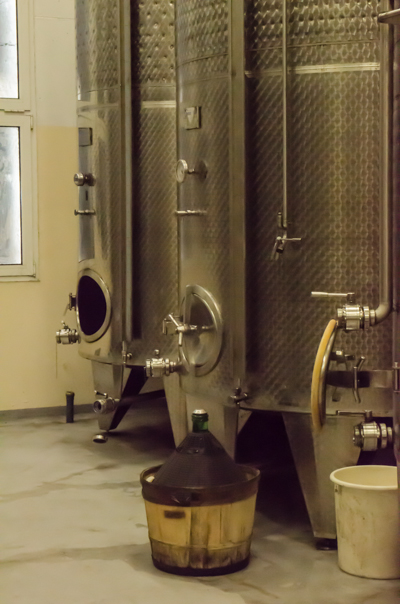 Giuliana shows us their production facility; small, but large enough for their limited production. Large stainless steel tanks for fermentation, pumping systems, and many racks for bottle storage, and an elaborate mechanized system for bottling their sparkling wines. They produce two types of sparkling wines, their prosecco wines which are produced using the Charmat-Martinotti method. This method, in which the second fermentation occurs in a stainless steel tank, rather than in the bottle as for champagne, is often referred to as just the Charmat method, named after the Frenchman Eugene Charmat, who stole the idea from the original Italian inventor, Martinotti. Giuliana makes sure we know this.
Giuliana shows us their production facility; small, but large enough for their limited production. Large stainless steel tanks for fermentation, pumping systems, and many racks for bottle storage, and an elaborate mechanized system for bottling their sparkling wines. They produce two types of sparkling wines, their prosecco wines which are produced using the Charmat-Martinotti method. This method, in which the second fermentation occurs in a stainless steel tank, rather than in the bottle as for champagne, is often referred to as just the Charmat method, named after the Frenchman Eugene Charmat, who stole the idea from the original Italian inventor, Martinotti. Giuliana makes sure we know this.
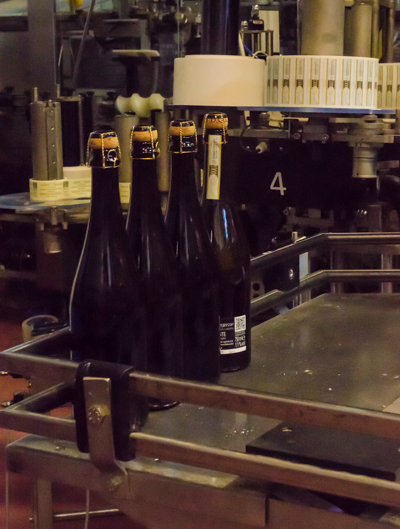 Their obvious pride and joy is their Colfondo Vino Frizzante, or sparkling wine. The Colfondo prosecco follows a slightly different production process, one that is traditional for this area around Asolo, practiced by the vecchi – the “old folks. For a Colfondo, the second fermentation occurs in the bottle, without disgorgement. The wine is then aged 6-8 months “sur lie” or on the lees, the residual yeast that remains following the secondary fermentation. The resulting wine still contains the lees, which are not disgorged as in champagne. This prosecco is bone dry, with less than 1 g/l of residual sugar, and notes of crusty bread due to the yeast. A separate, old school bottling machine is needed for this, where one or two people can individually bottle the Colfondo wines, making it a rather laborious process.
Their obvious pride and joy is their Colfondo Vino Frizzante, or sparkling wine. The Colfondo prosecco follows a slightly different production process, one that is traditional for this area around Asolo, practiced by the vecchi – the “old folks. For a Colfondo, the second fermentation occurs in the bottle, without disgorgement. The wine is then aged 6-8 months “sur lie” or on the lees, the residual yeast that remains following the secondary fermentation. The resulting wine still contains the lees, which are not disgorged as in champagne. This prosecco is bone dry, with less than 1 g/l of residual sugar, and notes of crusty bread due to the yeast. A separate, old school bottling machine is needed for this, where one or two people can individually bottle the Colfondo wines, making it a rather laborious process.
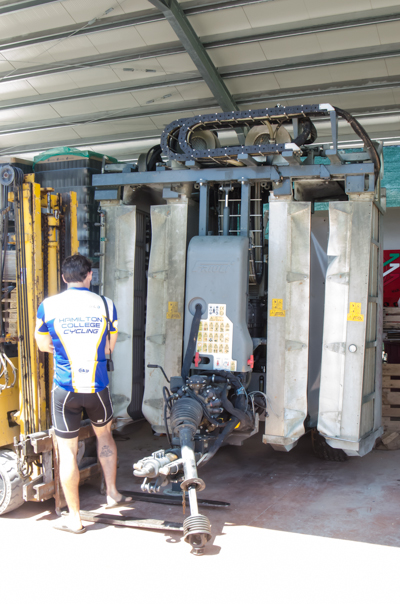 We go outside to view the crushing bin, located directly above the tanks. We are also shown a machine they use to control pests and fungus in their biodynamic vineyards; a machine that passes over the vines and acts essentially like a huge vacuum cleaner, using airflow and suction to remove pests.
We go outside to view the crushing bin, located directly above the tanks. We are also shown a machine they use to control pests and fungus in their biodynamic vineyards; a machine that passes over the vines and acts essentially like a huge vacuum cleaner, using airflow and suction to remove pests.
Our next, and most enjoyable stop – we are taken into Luca and Giuliana’s home, where glasses and their array of Prosecco await us. As always, we begin with their driest wine, the Colfondo.
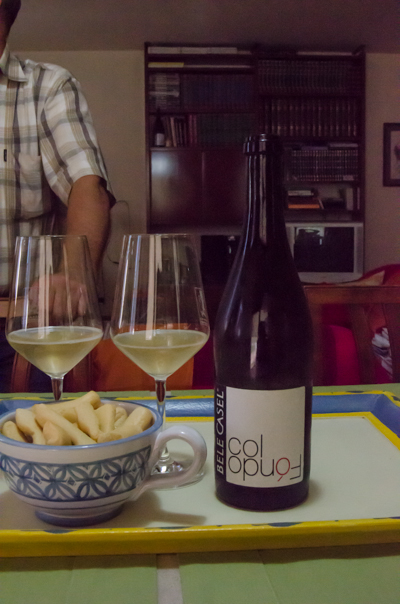 If you wish to enjoy a clear glass of Colfondo, you allow it to sit for a while before serving, carefully opening and pouring to avoid agitating the yeast. You can decant, or expect the last glass will end up with a good dose of the yeast. Or, as Giuliana recommends, you can embrace the experience by tipping the bottle upside down before opening, to make sure the yeast is distributed and enjoyed by all! This is the wine they enjoy as a family. The others, all less dry, are produced because that is what their export markets, including the US, prefer.
If you wish to enjoy a clear glass of Colfondo, you allow it to sit for a while before serving, carefully opening and pouring to avoid agitating the yeast. You can decant, or expect the last glass will end up with a good dose of the yeast. Or, as Giuliana recommends, you can embrace the experience by tipping the bottle upside down before opening, to make sure the yeast is distributed and enjoyed by all! This is the wine they enjoy as a family. The others, all less dry, are produced because that is what their export markets, including the US, prefer.
We all found this wine amazing; all but one of us preferred the Colfondo above all the others. Straw yellow with fine, long lasting bubbles, it exhibited notes of fruit balanced with the flavors of yeasty bread, growing more complex as the wine opens up. Perfect any time of day, as an aperitif or to accompany a traditional antipasti platter of cured meats.
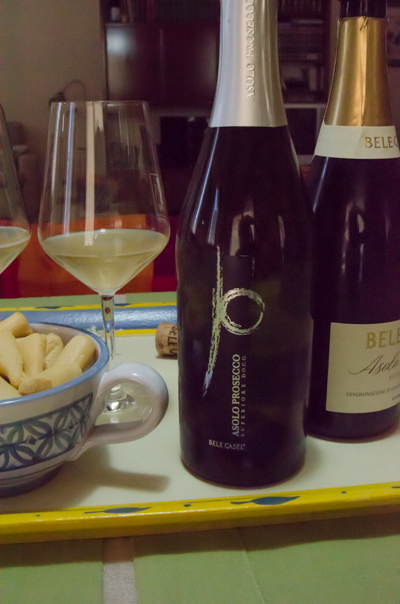 Next, their Asolo Prosecco DOCG Superiore Brut. A dry prosecco, but with residual sugars of 6.3 g/l, noticeably sweeter than the Colfondo. Produced using the Martinotti methods, it ages on it’s lees as well during the second fermentation. Elegant, with flavors of apple, a slight touch of yeast, and a nice acidity to balance. Pair with an antipasti, or fish.
Next, their Asolo Prosecco DOCG Superiore Brut. A dry prosecco, but with residual sugars of 6.3 g/l, noticeably sweeter than the Colfondo. Produced using the Martinotti methods, it ages on it’s lees as well during the second fermentation. Elegant, with flavors of apple, a slight touch of yeast, and a nice acidity to balance. Pair with an antipasti, or fish.
We move on, trying then the Extra Dry, and then the Dry. Flavors of sweeter fruits, like bananas, begin to appear, along with floral notes. We enjoy them all, each with their own unique flavors, and best occasion to be enjoyed. The Extra Dry and Dry would go perfectly with a nice dessert pastry or celebration cake. We pick up a couple of bottles to enjoy during our daily post-ride tasting event. And we are looking forward to ordering these back in the US upon our return home!
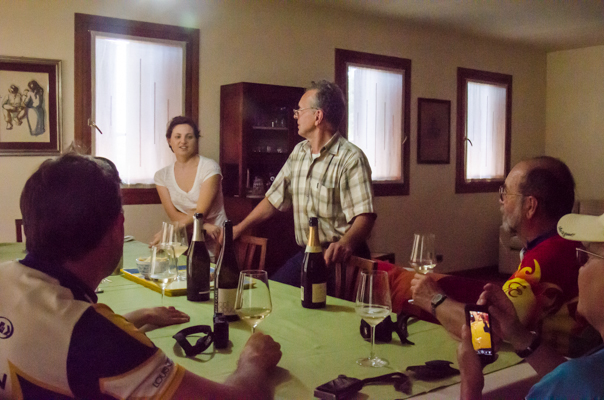 During our tasting, Luca’s father and Giuliana gave us a glimpse into their wine making philosophy, one that is driven by their respect for their terroir and their grapes, and producing wines that reflect the true nature of these. The beauty of the Veneto region in Italy is the vast number of microclimates you find within a very small area – imagine having climates that range from North Carolina to Maine, mountains and sea, all within a two hour drive. Producers such as Bele Casel will see experience many different microclimates within their small holdings, and understand how each can be used to their best advantage – what grapes to plant, when to harvest, how many grapes from each elevation to use. Then they sit back, and try to do as little as possible during the wine making process to allow the terroir to express itself to its fullest.
During our tasting, Luca’s father and Giuliana gave us a glimpse into their wine making philosophy, one that is driven by their respect for their terroir and their grapes, and producing wines that reflect the true nature of these. The beauty of the Veneto region in Italy is the vast number of microclimates you find within a very small area – imagine having climates that range from North Carolina to Maine, mountains and sea, all within a two hour drive. Producers such as Bele Casel will see experience many different microclimates within their small holdings, and understand how each can be used to their best advantage – what grapes to plant, when to harvest, how many grapes from each elevation to use. Then they sit back, and try to do as little as possible during the wine making process to allow the terroir to express itself to its fullest.
The results are truly marvelous, and well worth searching out. For the price, here in the US about $16 a bottle, you will be hard pressed to find a more enjoyable sparkler.
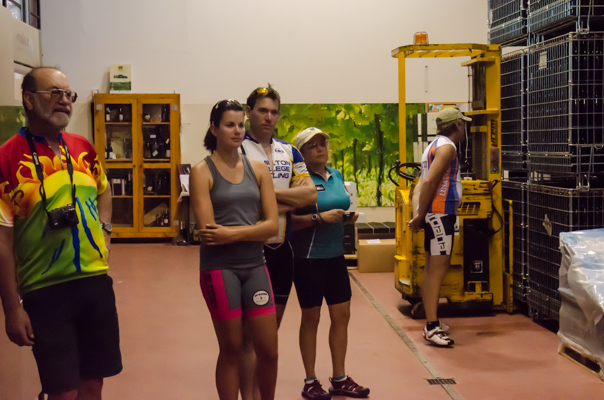
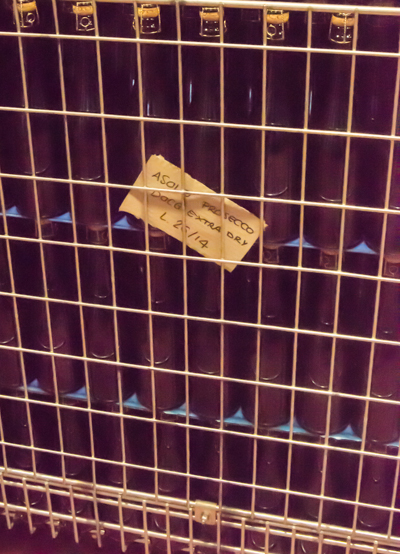

Pingback: @ItaliaOutdoors visits Bele Casel | Bele Casel
Pingback: Exploring Asolo -The City of a Hundred Horizons | Italian Food, Wine, and Travel
Pingback: colfondo #bele casel fietstochten italië #Asolo prosecco www.chefbikeski.com/ www.i ... - Ronica's Blog